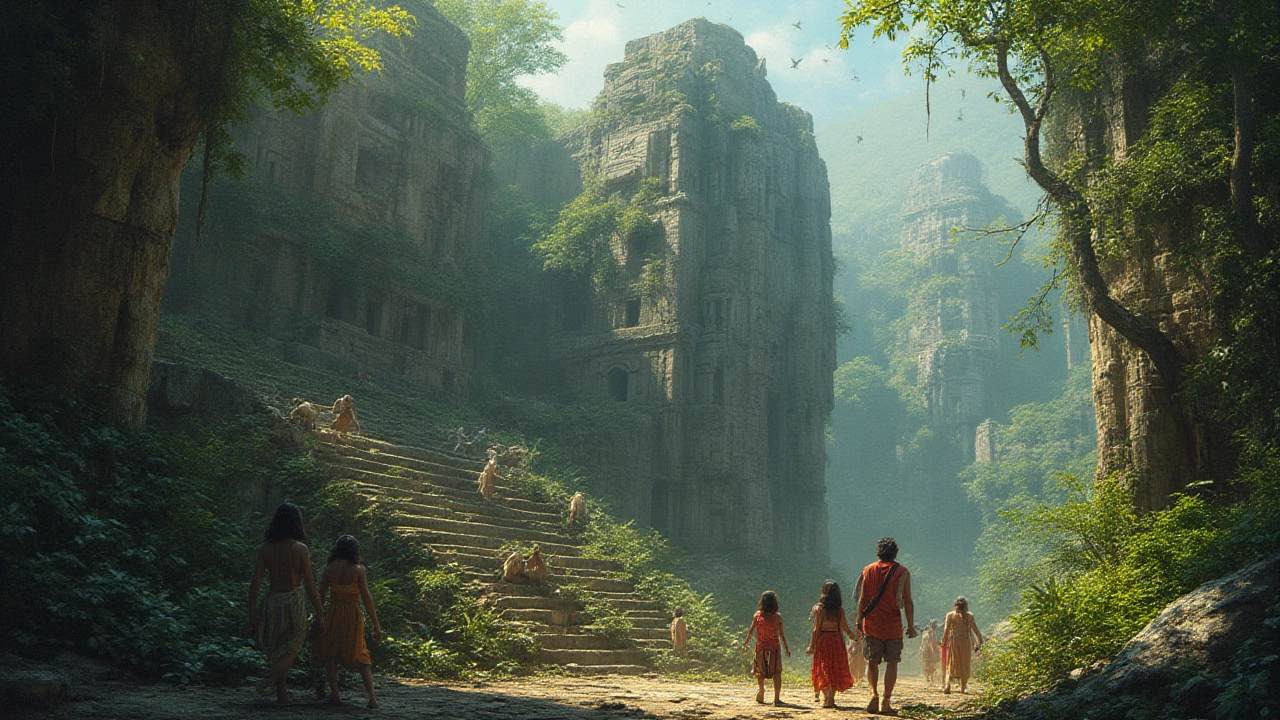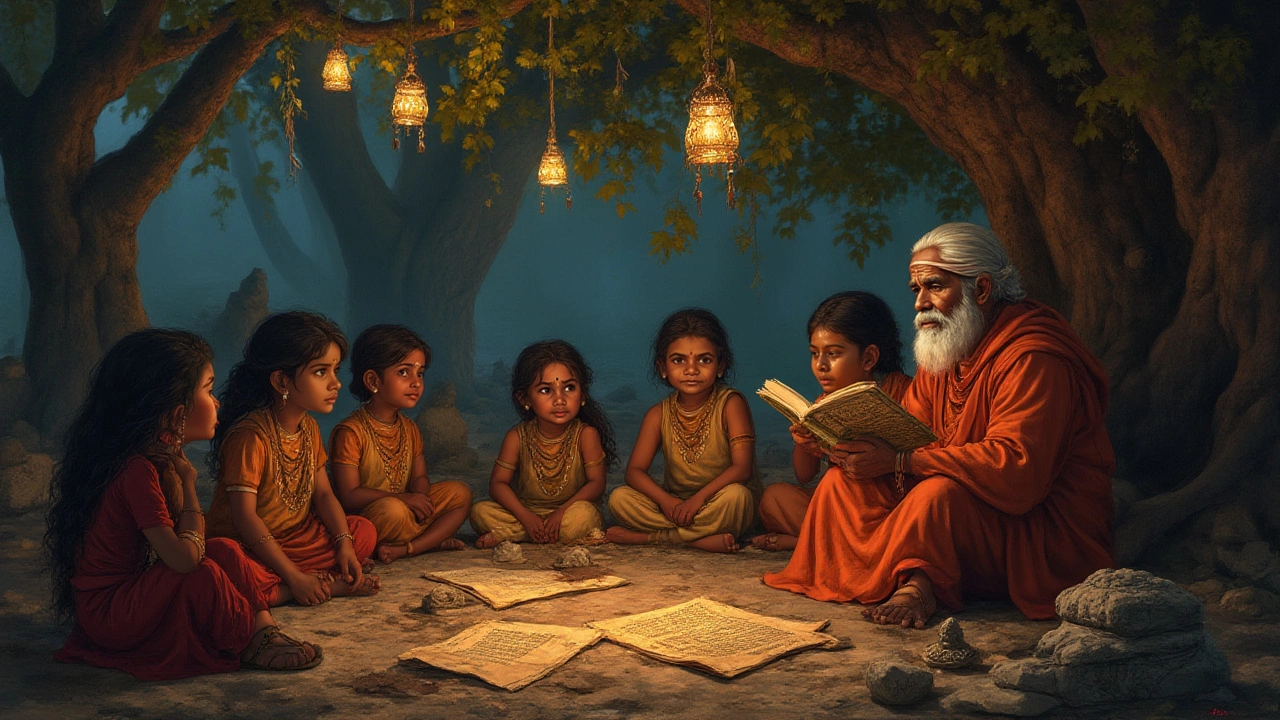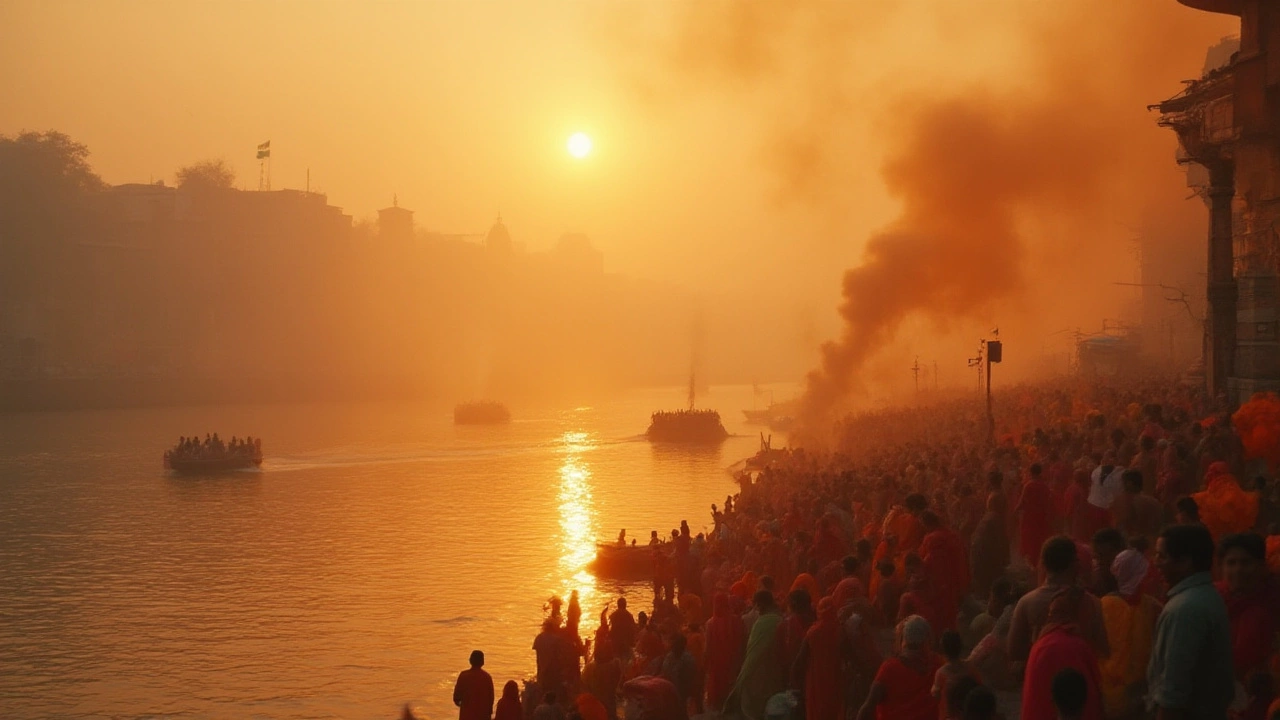If you could step into a time machine, where in India would you go to truly witness the country’s oldest roots? The answer sparks more debate than you’d expect. Historians wrinkle their brows and archaeologists dig deeper, literally and figuratively. But one name always bubbles up no matter who you ask: Varanasi, also known as Benares or Kashi. This city isn't just old—it's mind-bendingly ancient. Some say it’s been around for 3,000 years, others whisper 5,000. And the secrets of its winding lanes tell stories that outlast even kings and kingdoms.
The Living Legend: Varanasi’s Timeless Mystery
Walk along the ghats of Varanasi and you might feel it—the hum of life layered over centuries of history. This city sits right on the banks of the sacred Ganges river in Uttar Pradesh. But why does Varanasi keep popping up in lists of the world’s oldest cities? Because it never stopped being what it has always been: a vibrant and inhabited place. Sanskrit texts mention it as Kashi, the "Luminous City," as far back as the Rigveda—one of the oldest texts in the world, written around 1500 BCE. Even the Buddha chose to give his first sermon near here, at Sarnath. That's a historical flex you won’t find just anywhere.
Varanasi didn’t grow famous overnight. It survived invasions, empires, floods, and revolutions, yet still beats on with rituals that go back thousands of years. Every sunrise, priests keep age-old traditions alive with the Ganga Aarti, while pilgrims come to bathe in the same river their ancestors knew. The city’s maze of alleys, its stepwells, and temples like Kashi Vishwanath are much older than the Taj Mahal or the forts of Rajasthan. In fact, archaeological digs in the area have uncovered ceramics and pottery from the 9th century BCE, suggesting an urban sprawl long before most European cities were even on the map. That’s some deep-rooted history you can literally walk on.
But it’s not just religious ritual that links Varanasi to antiquity. The city has been a learning center for centuries, famous for Sanskrit, muslin and silk fabrics, and classical music. Mark Twain famously remarked: “Benares is older than history, older than tradition, older even than legend.” Did you know there’s a neighborhood here that claims to make saris the same way their forefathers did three millennia ago? The old ways aren’t just kept alive; they’re a daily reality. You’ll find families who can trace their roots back generations, maybe centuries. Stories get passed down at chai stalls, and the air buzzes with a sense that here, time isn’t linear—it circles back on itself.
If you’re traveling to Varanasi, bring curiosity and patience. Hire a local guide—preferably one with deep roots in the city. Don’t rush. Early morning boat rides are magical, sunset aartis are unforgettable, and the city’s street food—chaat especially—makes history feel delicious. Also, avoid the big festival days if crowds give you anxiety; Dev Deepawali and Maha Shivaratri can double the city’s population for a day. And when you’re at a ghat, put away your phone for a while. Let yourself slip into the sense that you’re part of something ancient.
Beyond Varanasi: Ancient Cities that Rival Time
Of course, India isn’t a one-city wonder. If you thought Varanasi held the crown without a challenger, think again. There’s debate over which city is truly the oldest, and some folks point out contenders like Madurai in Tamil Nadu. Mentioned in Tamil Sangam literature as early as 500 BCE, Madurai’s Meenakshi Temple is proof that South India was just as anciently active as the North. Here, merchants and poets thrived while Europe was still figuring out alphabet soup.
Then there’s Ujjain, another city with a serious claim. Called Avanti in ancient texts, this place was a powerful kingdom a thousand years before the Gupta Empire, and it’s one of the four locations for the Kumbh Mela festival, which some researchers believe is the world’s largest human gathering. Artifacts recovered from Ujjain date back to at least the 7th century BCE. That puts it right up there with Varanasi, and you can sense the echoes of those times on the banks of the Shipra river.
Travel northwest and you get to Patna—ancient Pataliputra. Megasthenes, the Greek historian traveling with Alexander the Great, wrote about its formidable walls and bustling streets as early as the 3rd century BCE. This was the capital of both the Mauryan and Gupta empires. The city has spent thousands of years reinventing itself, so if you’re a fan of ruins layered under modern chaos, you’ll feel right at home here.
For travelers weaving a route through India’s most ancient spots, these cities won’t let you down. Certain local museums, like Bharat Kala Bhavan in Varanasi or the Government Museum in Madurai, can help you fill in the history blanks. For an extra tip: go off the main tourist track and wander through old quarters and bazaars—every back alley and worn-out façade has a story hidden, if you’re willing to listen.

Lesser-Known Ancient Sites with Deep Roots
Let’s shift focus from the big names. India is full of places so old, their beginnings blur into legend. Take Mehrgarh in present-day Balochistan (yes, just across today’s India-Pakistan border). Archaeological evidence there points to habitation as far back as 7000 BCE! Even the Indus Valley cities of Harappa and Mohenjo-Daro blow up any neat timeline of civilization. While these particular sites lie outside modern India after the 1947 partition, related sites like Rakhigarhi in Haryana and Kalibangan in Rajasthan reveal just how ancient human settlement in India really is.
Rakhigarhi has produced pottery, jewelry, and the remains of houses from the 4th millennium BCE. This wasn’t just an isolated village but a huge, organized city with streets, drains, and even evidence of a written language that’s still undeciphered. That means people here were writing things down even before ancient Egyptians built their pyramids.
Other ancient gems? Bhimbetka rock shelters near Bhopal. These caves are UNESCO listed, and the art inside is breathtaking. Some paintings date back 30,000 years, showing scenes of dancing, hunting, and everyday life. If you love trekking, plan a visit between October and March for cool weather and fewer crowds. Bhimbetka gives proof that before there were cities, humans here were already painting their world.
Travel tip: When exploring these lesser-known places, do some reading ahead. Local guides can be hit or miss, but finding a good one pays off—look for someone who can read Sanskrit or Dravidian scripts if you’re feeling nerdy. And always check opening hours for remote archaeological sites; some close early, and transport options can be limited. Pro-tip: Download offline maps before you go—cell coverage is not a given.
How Old is Old? Digging into Dates and Debates
Trying to put a number on "oldest" can mess with your head. Does a city count if it exists in myth, or only if we dig up pots and bricks? Different experts take different starting lines. Some anchor it on historical records, others on archaeological finds. Here’s a little table that sums up a few of India’s prime contenders for “most ancient status,” with facts you’ll want to drop at your next trivia night:
| City/Site | Earliest Known Existence | Current State | Interesting Fact |
|---|---|---|---|
| Varanasi | at least 1000 BCE | World’s oldest inhabited city | Home to 2,000+ temples |
| Madurai | around 500 BCE | Major urban center | Tamil Sangams (poet assemblies) here |
| Ujjain | at least 700 BCE | Kumbh Mela location | Mentioned in Mahabharata as Avanti |
| Rakhigarhi | ~3500 BCE | Archaeological site | Largest Indus Valley site in India |
| Bhimbetka | ~30,000 BCE | Rock shelters | UNESCO heritage for prehistoric art |
Notice something? The numbers jump from a few thousand years straight to tens of thousands when you look at prehistoric art. It all depends on what you’re celebrating: uninterrupted human life, urban civilization, or proof of early culture. But modern India wins big where continuous living settlements are concerned—Varanasi has a heartbeat you can actually feel today.
If you’re into archaeology, India’s government-run ASI (Archaeological Survey of India) site posts updates about new digs and public access. Sometimes, universities open pop-up exhibits showing fresh finds—keep an eye out for those if you’re traveling through Delhi, Mumbai, or Kolkata.

Why India’s Most Ancient Places Still Matter Today
What makes these ancient places special isn’t just the old stones or faded artwork. It’s that they’re still alive—bustling, crowded, loud. The families who live in Varanasi or Madurai walk the same lanes their ancestors did. Festivals, rituals, and even local arguments play out much as they would’ve centuries ago. That’s something you can’t get from ruins alone.
It’s easy to feel overwhelmed by the scale of history here. Every step you take might be on earth where empires rose and fell, or where legendary teachers and poets once wandered. But there’s a trick to getting the most from these places: don’t just be a tourist. Spend real time. Eat what the locals eat, listen to stories, and be open to chance conversations. The pride residents have in their heritage is infectious. If you ask questions respectfully, you’ll hear answers that aren’t printed in any guidebook.
For those interested in deeper experiences, check out heritage walks—local NGOs in Varanasi, Madurai, and Ujjain organize these. Or try staying in a homestay run by a family with a long local history. And remember, ancient doesn’t mean stuck in the past. These cities balance the old and the new in weird, beautiful ways (think: teenagers streaming films on their phones while Brahmin priests chant mantras nearby).
Next time you hear someone ask, “What’s the most ancient place in India?” you’ve got layers to your answer. Varanasi tops the chart for continuous living, but India brims with places more ancient than we can probably ever crack. And who knows—they’re still digging. Maybe the oldest site is waiting just beneath the next patch of earth, another thousand years deeper. Until then, bring your curiosity and your walking shoes—the past in India is very much alive.
